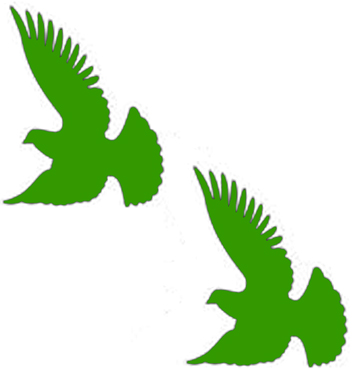Q: Regarding early breeding, what do you do to insure that the youngsters aren't chilled during the cold winter months? Do you use supplemental heat, or just proper nesting materials and no drafts?
Supplemental heat during winter breeding creates more problems than benefits for the most part. When you use supplemental heating, you normally cut down ventilation and this can give you chronic respiratory problems down the road. So instead, let's start with good nesting material. Oil dry or kitty litter (unscented) in the bottom of a big nestbowl works well for starters. This gives the youngsters a layer of insulation and also insures dryness in the nest. Also, another excellent option is to use a nesting pad instead of the oil dry. These are sold commercially, but you can make them yourself by cutting them out of carpet padding. Then give the birds nesting material such as straw in the loft so they can build a nice nest.
When you band your youngsters, if they do not have a good nest, then you can do that for them. In other words, make a well-padded straw nest and then put the youngsters on top. There will be no problem with the birds accepting a nest that you have built for them at that time. The other important thing would be to combine any single youngsters once you have banded them so there are always 2 in the nest. Two youngsters will keep each other warm. It is like cuddling up to your wife in bed.
Another factor if you use artificial lighting is to make sure that a timer does not go off when the parents might be off the nest to get a drink of water and then cannot return in the dark. Many Europeans use an automated dimmer on their lights in order to simulate gradual darkness to evening. If this is not practical, then I would suggest you have your lights on a timer that comes on early in the morning and let Mother Nature take its course in the evening. In this way you will have no accidents. And please remember, in order to breed in the winter, you need at least 14 1/2 hours of light to be successful.
